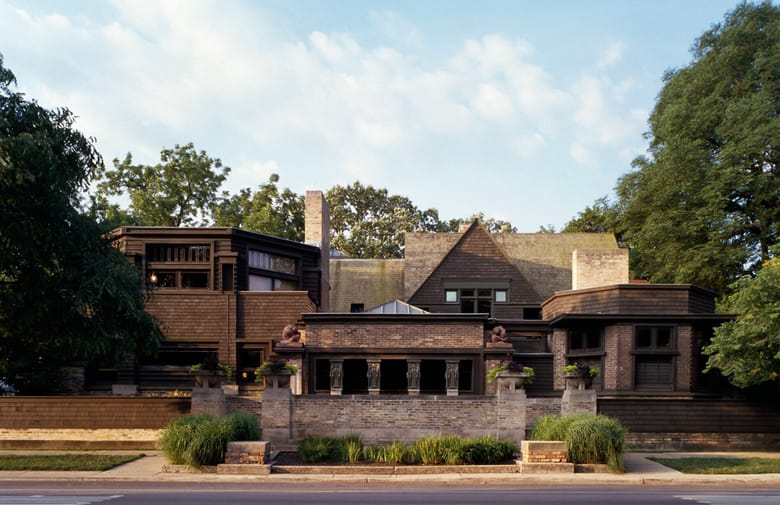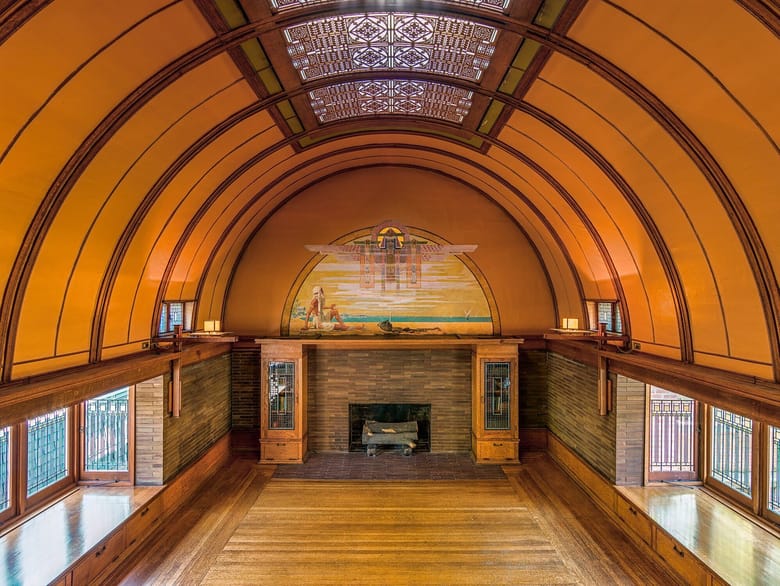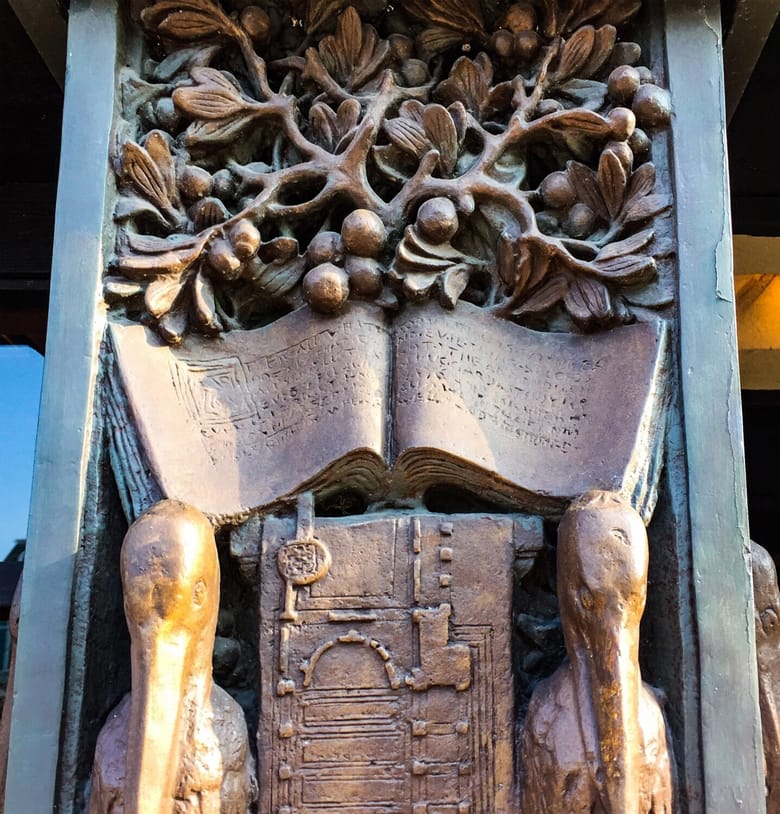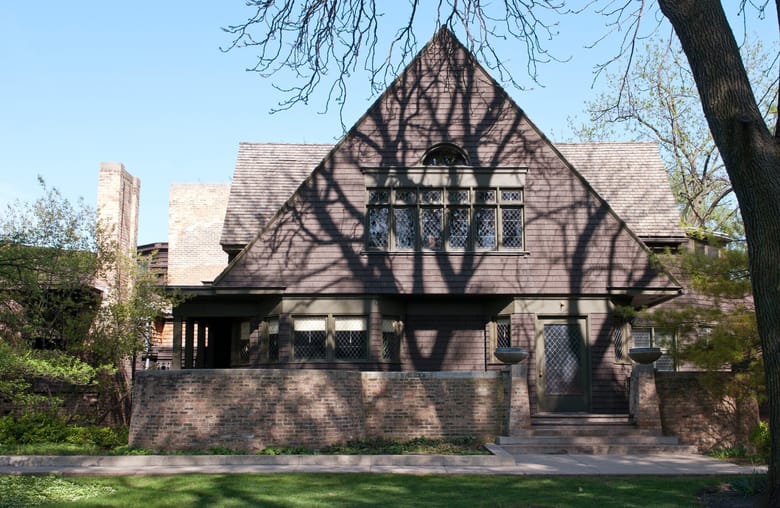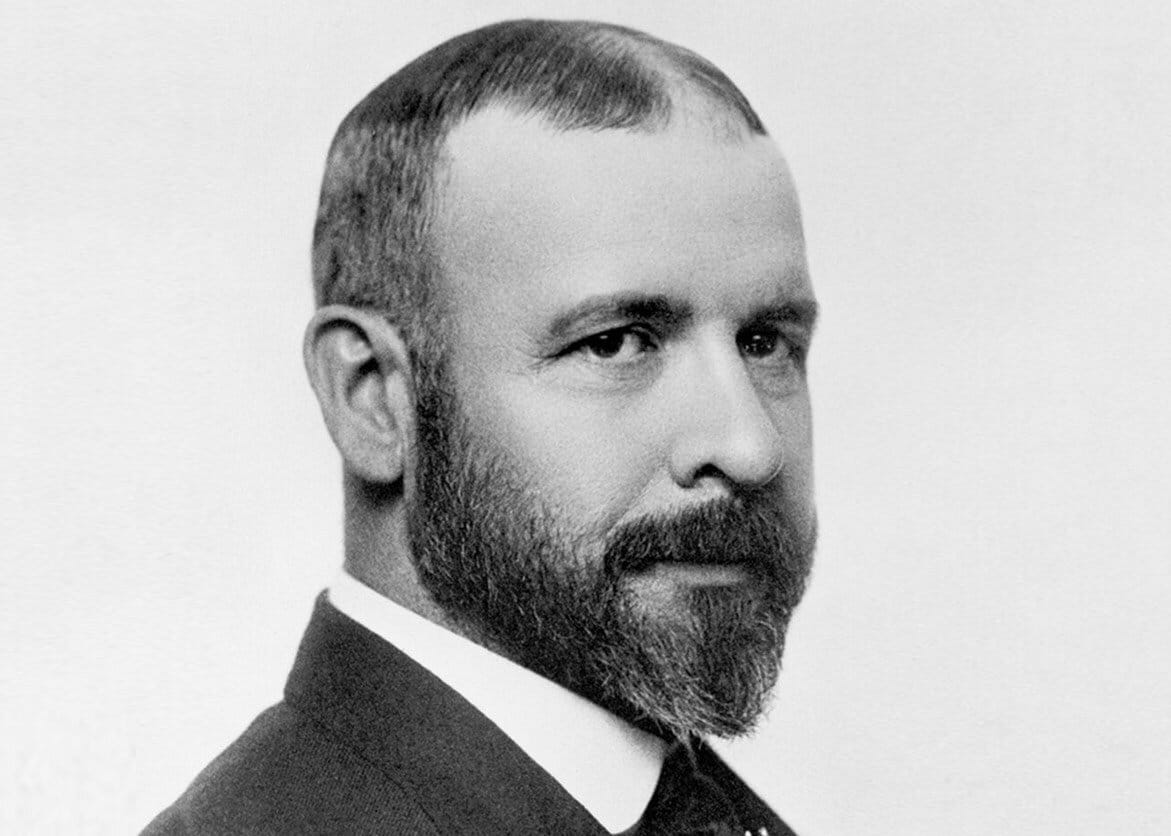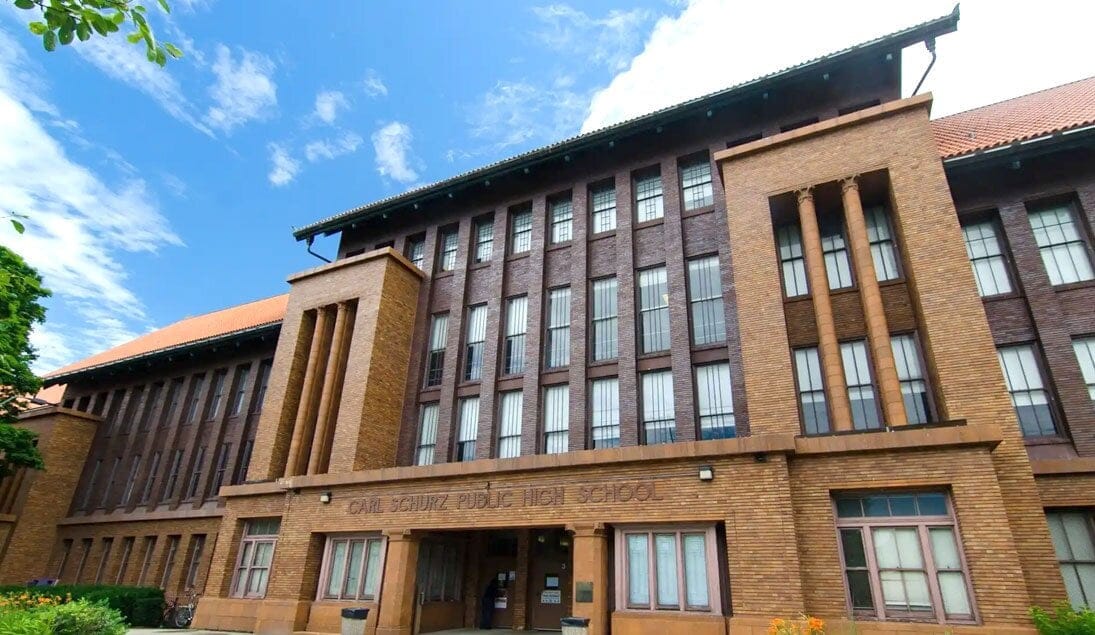Frank Lloyd Wright Home & Studio
In a leafy neighborhood with nearly 30 Frank Lloyd Wright-designed structures, the house at the corner of Forest and Chicago might not stand out at first.
Photo by Tim Long
Photo by James Caulfield
Photo by Eric Allix Rogers
Photo by Anne Evans
The Frank Lloyd Wright Home & Studio is an early expression of the ideas that ultimately became the Prairie School—and the place where some of the most famous buildings in that style were designed.
A MODEST FAMILY HOME
When Louis Sullivan loaned $5,000 to a young draftsman in his office in 1888, he probably didn’t see it as an early investment in one of America’s most significant architects. And initially, the modest Oak Park house that Frank Lloyd Wright built was only a subtle foreshadowing of the revolution to come.
Wright launched his own practice in 1893, and his growing family necessitated an expansion of the house by 1895. In 1899, having moved his practice into the house, he expanded it again, adding the large studio whose suspended drafting balcony was one of his earliest structural innovations.
AGAINST THE VICTORIAN STYLE
While the Home & Studio isn’t clearly Prairie School, it is distinct from its fussier Victorian contemporaries. They share a few formal elements, including a front porch and a grand main stairwell, but even those are executed quite differently. Wright pointedly configured the house’s windows to block views of neighboring Victorian homes.
But the differences are significant as well. The movement through a compressed entryway into a larger living space makes an early appearance, as does the open plan arranged around a central hearth. Even the materials and color scheme prefigure the Prairie School.
CRADLE OF THE PRAIRIE SCHOOL
In a sense, the studio was a school, a training ground for some of the best-known architects of the Prairie School. Some of Wright’s most talented and important employees worked for him in Oak Park, including William Drummond, Barry Byrne, Walter Burley Griffin and Marion Mahony Griffin.
There, they helped Wright bring the nascent Prairie School to maturity, working on such iconic buildings as Unity Temple (1908) and Robie House (1909).
Did you know?
The Home & Studio was chopped up into apartments at some point, but has been restored to its 1909 appearance.
Did you know?
The drafting balcony hangs from the ceiling of the studio.
Did you know?
The house and studio were configured to wrap around a tree that Wright loved and wanted to keep.

